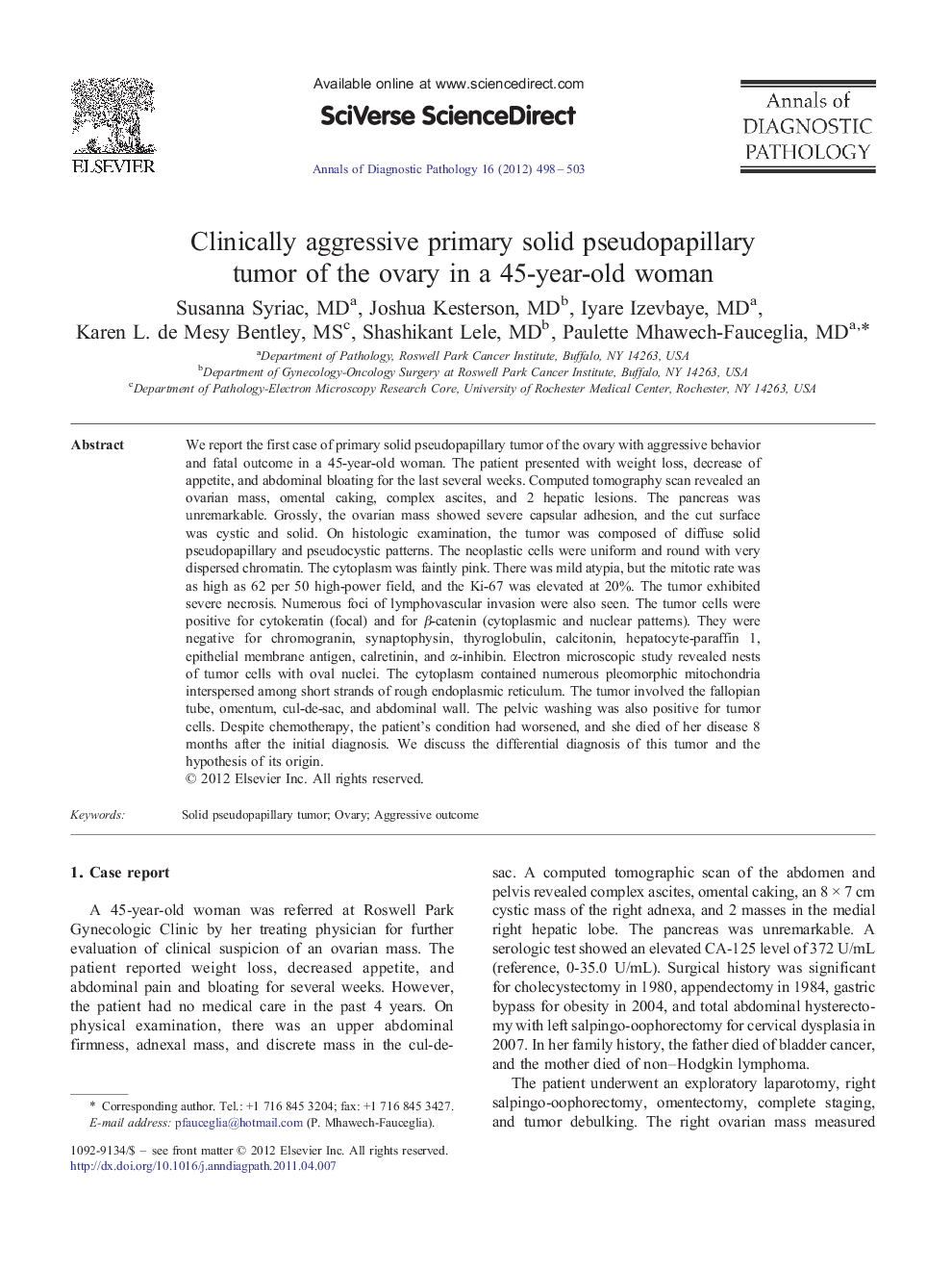| Article ID | Journal | Published Year | Pages | File Type |
|---|---|---|---|---|
| 6215119 | Annals of Diagnostic Pathology | 2012 | 6 Pages |
We report the first case of primary solid pseudopapillary tumor of the ovary with aggressive behavior and fatal outcome in a 45-year-old woman. The patient presented with weight loss, decrease of appetite, and abdominal bloating for the last several weeks. Computed tomography scan revealed an ovarian mass, omental caking, complex ascites, and 2 hepatic lesions. The pancreas was unremarkable. Grossly, the ovarian mass showed severe capsular adhesion, and the cut surface was cystic and solid. On histologic examination, the tumor was composed of diffuse solid pseudopapillary and pseudocystic patterns. The neoplastic cells were uniform and round with very dispersed chromatin. The cytoplasm was faintly pink. There was mild atypia, but the mitotic rate was as high as 62 per 50 high-power field, and the Ki-67 was elevated at 20%. The tumor exhibited severe necrosis. Numerous foci of lymphovascular invasion were also seen. The tumor cells were positive for cytokeratin (focal) and for β-catenin (cytoplasmic and nuclear patterns). They were negative for chromogranin, synaptophysin, thyroglobulin, calcitonin, hepatocyte-paraffin 1, epithelial membrane antigen, calretinin, and α-inhibin. Electron microscopic study revealed nests of tumor cells with oval nuclei. The cytoplasm contained numerous pleomorphic mitochondria interspersed among short strands of rough endoplasmic reticulum. The tumor involved the fallopian tube, omentum, cul-de-sac, and abdominal wall. The pelvic washing was also positive for tumor cells. Despite chemotherapy, the patient's condition had worsened, and she died of her disease 8 months after the initial diagnosis. We discuss the differential diagnosis of this tumor and the hypothesis of its origin.
